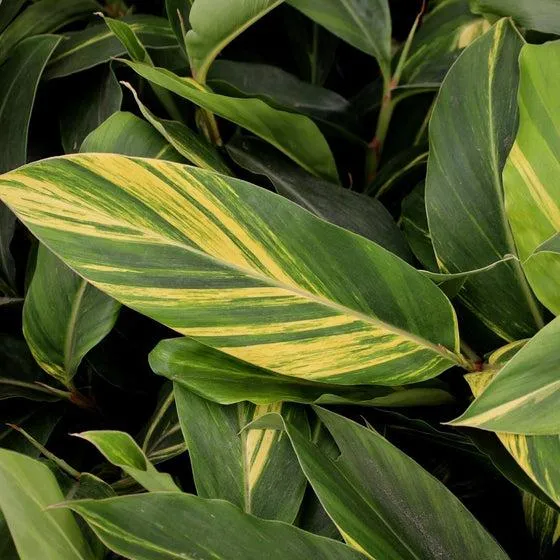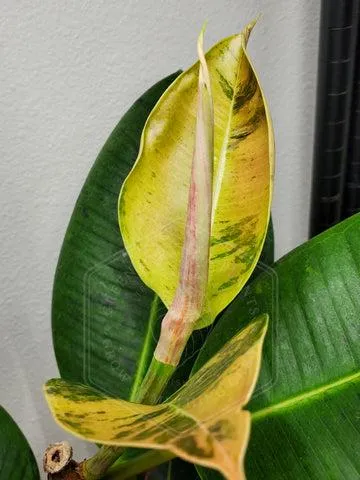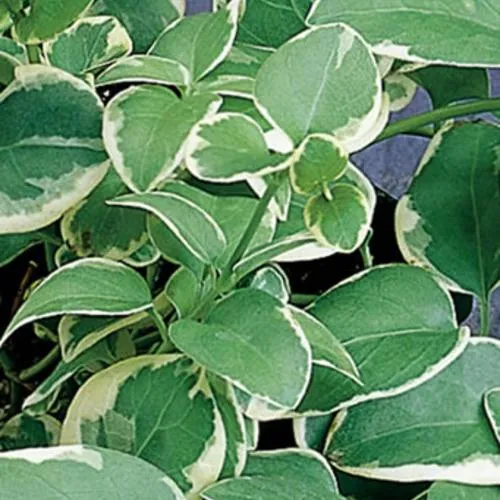Everything You Need to Know About Variegated Plants
If you’ve searched for the term “variegated,” chances are you’ve come across some beautiful plants with striking white, yellow or pink patterns on their leaves. But what exactly does “variegated” mean? In this article, I’ll break down everything you need to know about variegated plants, from the biology behind their colorful leaves to tips for caring for them in your home or garden.
What is a Variegated Plant?
In simple terms, a variegated plant is one whose leaves exhibit color patterns other than just solid green. The variegation is caused by a lack of chlorophyll – the pigment that makes plants green – in certain areas of the leaf. Without chlorophyll to mask it, the leaf’s natural yellow, pink or white pigments shine through in splotches or streaks. This creates leaves with contrasting patterns that are often described as “marbled,” “mottled” or “striped.”
Variegation occurs naturally through genetic mutations or sports, but some plants like English ivy have been selectively bred over centuries to showcase more dramatic color contrasts. While variegated plants are often prized for their ornamental value in gardens and homes, the streaks of missing chlorophyll can be a disadvantage as those sections are unable to photosynthesize like green areas.
Popular Variegated Plant Varieties
- Philodendron: Heartleaf (Philodendron bipinnatifidum) and Brasil (Philodendron hederaceum) philodendrons are commonly available with white-splashed leaves.
- Pothos: Golden or satin pothos (Epipremnum aureum) has bright yellow variegation.
- Monstera: Monstera deliciosa comes in variegated forms with cream or white flecking.
- English Ivy: Hedera helix varieties like ‘Eva’ have low-maintenance, trailing ivy with cream-edged leaves.
- Peperomia: Variegated forms of peperomia like ‘Raindrop’ have splotchy green and white patterns.
Caring for Variegated Houseplants
While showstopping, the lack of full chlorophyll in variegated plants means they require a bit more care than their solid green counterparts. Here are some tips:
- Light – Variegated plants need extra bright, indirect light to compensate for the non-photosynthesizing sections. South- or west-facing windows are ideal.
- Water – Be careful not to overwater, as variegated plants are more prone to root rot. Only water when the top inch of soil is dry.
- Fertilizer – Give a diluted liquid houseplant fertilizer monthly in the growing season to boost growth of the green sections.
- Pruning – Remove any all-green or weakly variegated shoots that form to maintain the plant’s variegated pattern.
- Hardiness – Most variegated houseplants are tropical and can’t tolerate temperatures below 60°F, so protect from drafts near windows.
By meeting their unique light and nutrient needs, you can keep variegated houseplants looking their bright, patterned best indoors for many years. Give them optimal care and they’ll add continuous pops of color and visual interest wherever you place them.

Tips for Growing Variegated Plants Outdoors
While some variegated plants like English ivy thrive outdoors year-round in mild climates, others may need extra TLC if grown outside:
- Choose sun-worshipping variegated plants that can take full sun, like variegated mondo grass or variegated liriope.
- In colder zones, move potted variegated plants like coleus into a protected, sunny spot for winter or overwinter as houseplants.
- Mulch around the base in summer to retain moisture and suppress weeds competing for nutrients.
- Stake or trellis climbing variegated vines like variegated clematis and hostas to avoid lose of leaves to sun or wind burn.
- Prune off any all-green reversions that appear, as these won’t hold their variegation in fluctuating outdoor conditions.
By selecting hardy varieties suited to your growing zone and microclimate, variegated flowers, foliage plants and ground covers can thrive outdoors just as beautifully as their solid green counterparts.
Combining Variegated Plants in Your Landscape
Thanks to their eye-catching patterns, variegated plants are landscape superstars. Here are some tips for showing them off:
- Create a foundation planting using a color scheme like green with white variegation for visual unity.
- Alternate upright plants with trailing vines like variegated sweet potato vines for a lush, layered look.
- Underplant shaded perennial beds with variegated hostas, epimediums and heucheras for shadow pops of color.
- Variegated tropicals like coleus, bromeliad add color into shade gardens without bright sun.
- Variegated grasses such as mondo, liriope, carex complement but don’t compete with perennials and shrubs.
By mixing and matching variegated greens, your landscape will achieve eye-catching curb appeal and visual interest season after season. So don’t be afraid to get creative with combining different variegated patterns outdoors!
Common Problems With Variegated Plants
While stunning, variegated plants do face some climate-related challenges:

- Reversion – Stress like low light can cause a variegated plant to mutate back to plain green leaves. Regularly prune off any solid green growth.
- Leaf scorch – Too much sun or heat scorches the non-chlorophyllous sections. Provide afternoon shade in hottest spots.
- Legginess – Without as much photosynthesis occurring, variegated plants may get tall and lanky faster than all-green versions.
- Fungal diseases – Without chlorophyll, variegated leaves are more prone to fungal infections like black spot during humid wet spells.
By properly selecting plants suited to your climate and keeping variegated varieties in optimal growing conditions, you can minimize these potential downsides and enjoy their striking foliar patterns for many seasons.
In Summary
Whether you grow a few variegated houseplants indoors or design a whole landscape using their colorful foliage patterns, understanding how to care for variegated plants is key to their long-term success and visual impact. With the right light, nutrients, pruning and protection from stresses, their bold leaf shapes and contrasts will shine for years to come!
I hope this overview has answered any questions you may have had about the beautiful world of variegated plants. Please let me know if you need any clarification or have additional queries I may help address.
Factors to Consider When Choosing a Variegated Plant
| Trait | Details |
|---|---|
| Light Exposure | Variegated plants need bright, indirect light to maintain variegation and avoid losing color. |
| Water Needs | Water thoroughly when soil is dry 1-2 inches deep, allowing soil to dry slightly between waterings. |
| Fertilizer | Fertilize monthly in spring and summer with a balanced houseplant fertilizer diluted by half. |
| Temperature | Most variegated plants prefer temperatures between 60-80°F. Some can tolerate cooler conditions near a window. |
| Pruning | Prune off parts that lose variegation to maintain plant appearance and discourage all-green reversions. |
FAQ
-
What is verigated?
Verigated basically means marked with various colors or streaks. So a variegated plant has green leaves mixed with other colors.
-
How do variegated plants get their colors?
Plants gain their verigated look due to a natural lack of chlorophyll in parts of their leaves. Without the green pigment chlorophyll, other pigments like yellow, white or pink end up being more noticeable. So it’s kind of a genetic thing where sections don’t produce as much green.

-
Are variegated plants rarer?
You might think variegated plants would be super rare since their color variation isn’t typical for plants. However, many common houseplants like philodendrons, pothos and monstera deliciosa regularly occur in variegated forms. So while unique variegates can be hard to find, lots of plants sometimes grow with this awesome mixed color pattern.
-
Do variegated plants grow slower?
It appears that variegated plants might have a harder time since the missing chlorophyll could mean they photosynthesize less efficiently. At the same time, horticulturalists have found the growth rate difference may be quite modest with many verigated beauties. However, keeping variegated greenery in bright light seems to strengthen it.
-
Will variegated leaves revert to solid green?
Perhaps one of the scariest things variegated plant parents worry about is their leaves losing their cool colors and going completely green. Amazingly, there are some reported cases of solid sections turning variegated over time! Still, the cells keeping a plant’s variegation do seem weakly genetic. Given low light or stress, leaves may start to revert. Yet with TLC, variegation often persists.
-
Are all variegated plants valuable?
While some variegated rarities can fetch stunning prices, plenty of lovely veriegated plant pals aren’t super expensive. In fact, common variegated pothos, philodendrons or monstera are available for lower costs. So the worth isn’t always dollars – any plant bringing beauty to a home really is a gift. Even if a veriegated variety isn’t viewed as special by others, its value lies in the joy it gives.
-
What’s the best way to care for variegated plants?
To keep verigated plants looking their brightest, strong, indirect sunlight seems key. The light helps the plant make energy while not scorching the pale parts. Translated, east or west windows are great spots. Also, moderate water and fertilizing nourishes new growth without stressing leaves. One last tip – pinch off solid green reversions to encourage more colorful growth!

